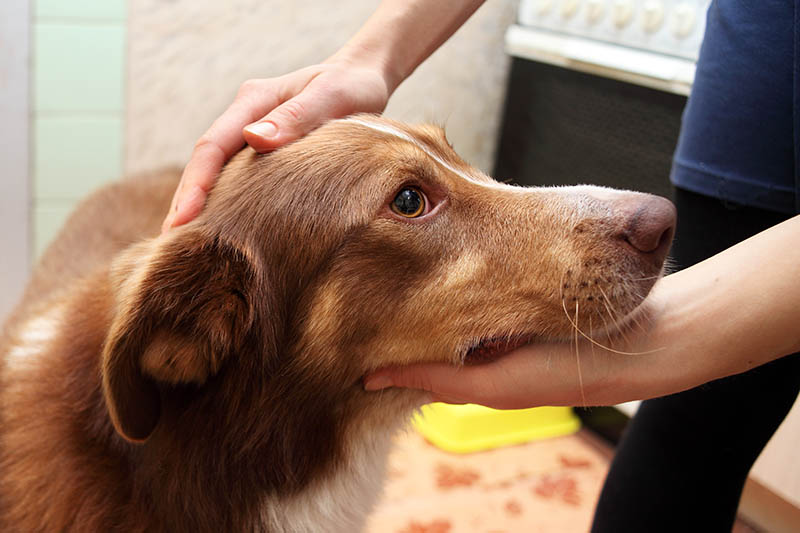Even if your canine doesn’t show signs instantly, it is best to all the time contact the vet if they’ve eaten even a small quantity of xylitol. Always contact your vet and observe the treatment instructions you obtain. If so, you will need to take your canine to see a vet. If your dog has eaten an extreme amount of chewing gum that isn’t sugar-free, you will need to take them to see a vet because it may also trigger intestinal blockages. The quantity that causes a canine to have low blood sugar is about 0.1 grams per kilo of body weight. If a dog eats 0.5 grams of xylitol per kilogram of body weight or extra, the danger of liver damage additionally will increase. If the canine eats something containing xylitol, attempt to find out how much and what to do if my dog eats chocolate the product’s xylitol content material is. In case your dog ate a bubble gum containing xylitol, call your vet immediately. From ten minutes to twelve hours, and if you happen to suspect your canine has eaten xylitol, it’s essential to take them to the vets for care as soon as possible. The only approach for a dog to outlive is prompt motion to get the dog to a veterinarian for aggressive veterinary care.
 Fortunately, quick, supportive care will help a dog get better, however these tales don’t all the time have a happy ending. A chunk of sugar-free gum will possible contain xylitol, an synthetic sweetener and extremely poisonous to a canine. While this blog is about gum, it is important to notice that xylitol is found in a wide range of other foods and merchandise that your dog may eat at random, including sugar-free candy, peanut butter, toothpaste, chewable vitamins, nasal sprays, sunscreen, deodorant, baby wipes, hair products, and a variety of human medications. It may be found in gum, mints, gummy vitamins, peanut butter, and even toothpaste. Alcohol may cause “vomiting, diarrhea, decreased coordination, central nervous system depression, problem breathing, tremors, abnormal blood acidity, coma and even demise,” in accordance with the American Society for the Prevention of Cruelty to Animals. Even when a canine eats only 0.1 grams of xylitol per kilogram of physique weight, it will possibly develop hypoglycemia, i.e. blood sugar can drop dangerously low. If the dog finds already chewed gum on the bottom and eats it, the chance of poisoning is very small. If your dog eats chewing gum with xylitol, an artificial sweetener, they’ll get a extreme sickness.
Fortunately, quick, supportive care will help a dog get better, however these tales don’t all the time have a happy ending. A chunk of sugar-free gum will possible contain xylitol, an synthetic sweetener and extremely poisonous to a canine. While this blog is about gum, it is important to notice that xylitol is found in a wide range of other foods and merchandise that your dog may eat at random, including sugar-free candy, peanut butter, toothpaste, chewable vitamins, nasal sprays, sunscreen, deodorant, baby wipes, hair products, and a variety of human medications. It may be found in gum, mints, gummy vitamins, peanut butter, and even toothpaste. Alcohol may cause “vomiting, diarrhea, decreased coordination, central nervous system depression, problem breathing, tremors, abnormal blood acidity, coma and even demise,” in accordance with the American Society for the Prevention of Cruelty to Animals. Even when a canine eats only 0.1 grams of xylitol per kilogram of physique weight, it will possibly develop hypoglycemia, i.e. blood sugar can drop dangerously low. If the dog finds already chewed gum on the bottom and eats it, the chance of poisoning is very small. If your dog eats chewing gum with xylitol, an artificial sweetener, they’ll get a extreme sickness.
If greater than half-hour have passed since consuming xylitol, you may also help elevate the canine’s blood sugar as a primary help by giving the canine syrup or honey: 1 tablespoon per 5 kilograms of body weight, either instantly in the mouth or blended with water. Xylitol is rapidly absorbed into your dog’s bloodstream as soon as consumed. Symptoms usually appear inside the first hour and might range of their depth relying on the quantity of xylitol consumed. The first thing you must decide when confronted with a canine who has eaten chewing gum is the kind of gum that was consumed by your canine. The vital thing to know is what happens when dogs eat chewing gum. Xylitol isn’t the only thing people ingest that may be harmful for canines. What if Dogs Ate Sugar-Free Gum Without Xylitol? Xylitol — a sugar alcohol typically used instead for sugar — is an ingredient generally present in sugar-free chewing gums and mints, toothpaste and retailer-bought baked items, amongst other items, in line with PetMD. Most chewing gums usually contain 0.22 to 1.0 grams of xylitol per piece of gum. That means ingesting one piece of gum may end up in hypoglycemia, and any amount extra may cause severe liver illness.
 Only one piece of chewing gum containing xylitol to small canines could cause severe well being issues. Eating merchandise containing xylitol is dangerous for a canine, and even a small quantity could cause a severe drop in blood sugar that is life-threatening. Even a small amount of xylitol could cause dangerous poisoning for a canine – have you learnt what it’s in and how to identify the signs of poisoning? Dark chocolate, 70% to 99%, is the healthiest alternative — with the least amount of sugar and probably the most heart-wholesome benefits. Hypoglycemia happens in a dog’s physique as a result of the pancreas releases high amounts of the hormone insulin, which moves the glucose around the bloodstream; nevertheless, this excess launch of insulin to combat xylitol causes a drop in blood sugar. The dog’s cells will then start absorbing glucose from the bloodstream, which can lead to hypoglycemia, or low blood sugar, and even demise. Symptoms of Xylitol toxicity embrace (but will not be restricted to): Lethargy Vomiting (Emesis) Diarrhea Loss of coordination (Ataxia) Seizures If untreated, Xylitol toxicity can even result in liver failure, blood clotting abnormalities, and loss of life.
Only one piece of chewing gum containing xylitol to small canines could cause severe well being issues. Eating merchandise containing xylitol is dangerous for a canine, and even a small quantity could cause a severe drop in blood sugar that is life-threatening. Even a small amount of xylitol could cause dangerous poisoning for a canine – have you learnt what it’s in and how to identify the signs of poisoning? Dark chocolate, 70% to 99%, is the healthiest alternative — with the least amount of sugar and probably the most heart-wholesome benefits. Hypoglycemia happens in a dog’s physique as a result of the pancreas releases high amounts of the hormone insulin, which moves the glucose around the bloodstream; nevertheless, this excess launch of insulin to combat xylitol causes a drop in blood sugar. The dog’s cells will then start absorbing glucose from the bloodstream, which can lead to hypoglycemia, or low blood sugar, and even demise. Symptoms of Xylitol toxicity embrace (but will not be restricted to): Lethargy Vomiting (Emesis) Diarrhea Loss of coordination (Ataxia) Seizures If untreated, Xylitol toxicity can even result in liver failure, blood clotting abnormalities, and loss of life.
